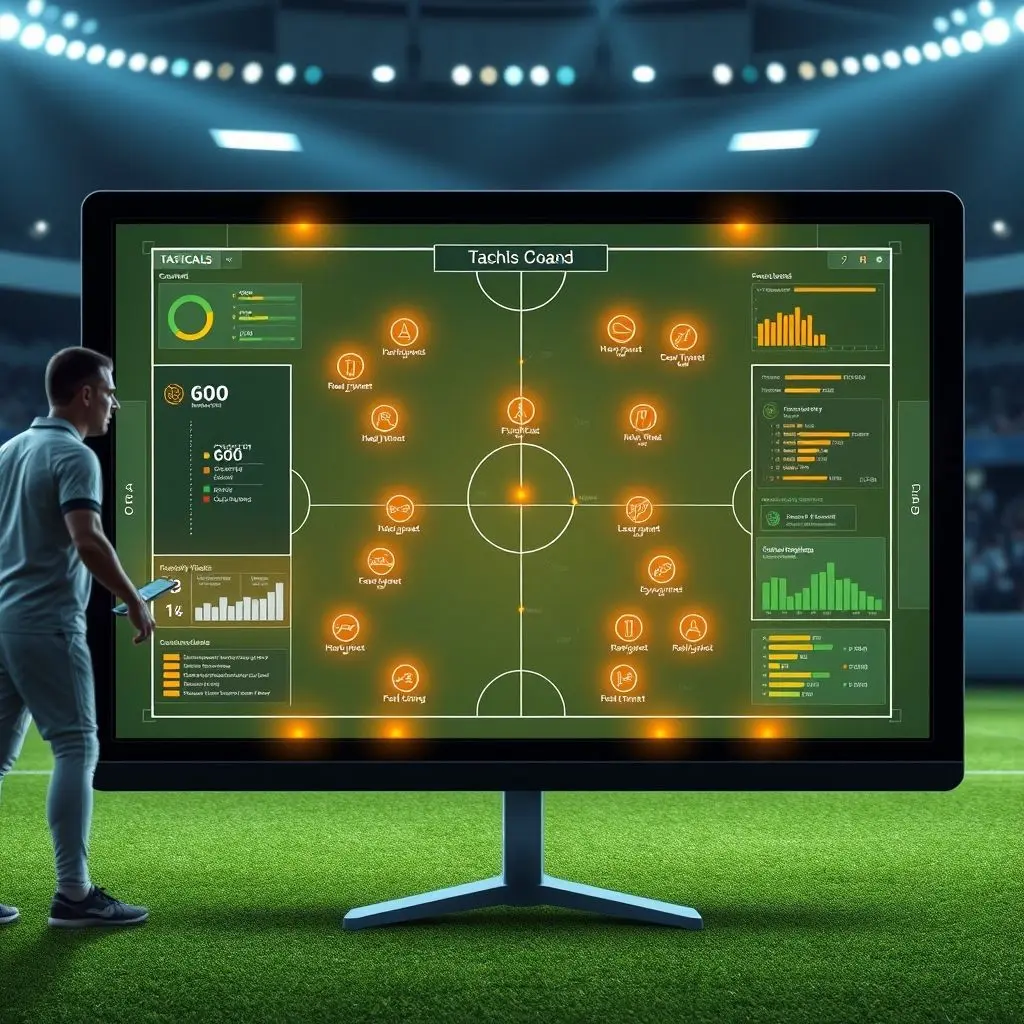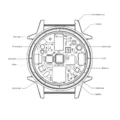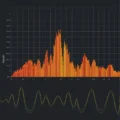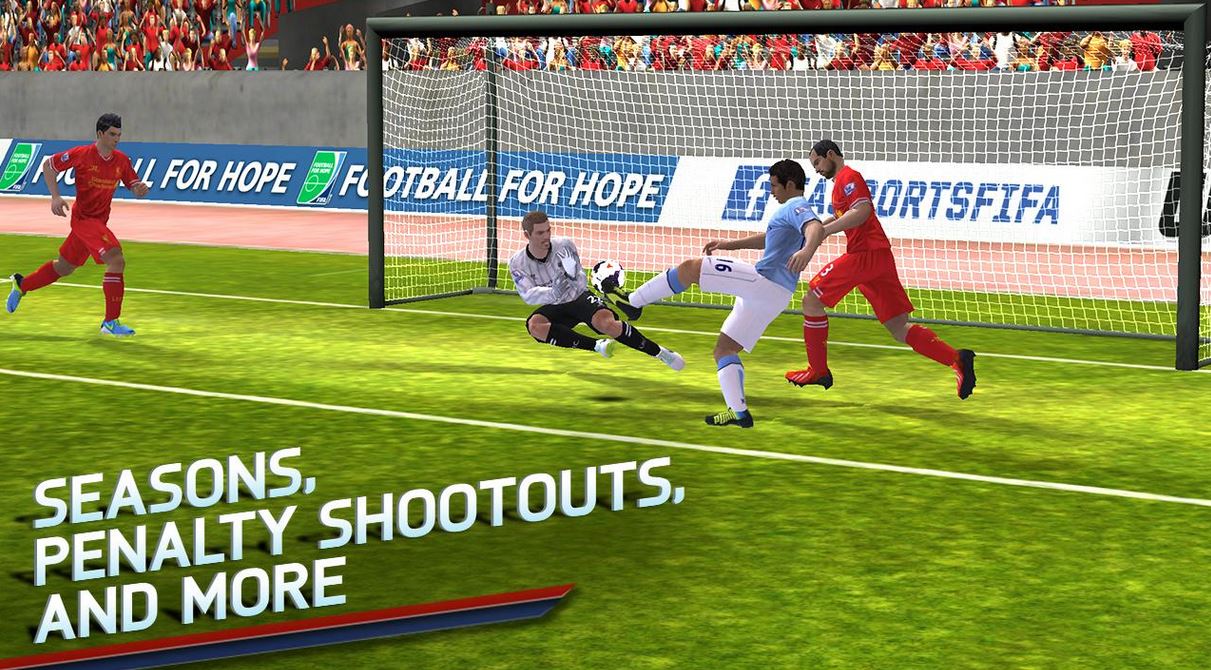Hey there, fellow sports aficionados! Ever sat glued to the screen, marveling at how certain teams just seem a step ahead, always making the right move? While raw talent will forever be the heart of the game, there’s a powerful new player in the mix, working behind the scenes: Artificial Intelligence.
It’s not just about gut feeling or legendary coaching wisdom anymore. The edge, the winning plays, the optimized training regimens – much of it is now powered by data, crunched and analyzed by AI systems. Imagine a supercomputer, not just observing the game but dissecting every single action, every player movement, every opponent’s tendency down to the millisecond.
This incredible technology is revolutionizing how athletes train, how coaches strategize, and how teams prepare for battle. It’s transforming raw statistics into actionable insights, helping prevent injuries, fine-tune skills, and ultimately, tip the scales towards victory.
Curious to see a quick glimpse of this tech in action? Check out this short video:
(Note: Replace ID_Placeholder with the actual YouTube shorts video ID)
Table of Contents
Deep Dive into AI-Powered Performance Analysis
At its core, AI in sports performance analysis is about understanding what happens on the field, court, or track with unprecedented detail. It involves collecting massive amounts of data from various sources:
- Wearable Sensors: GPS trackers, accelerometers, gyroscopes embedded in vests or equipment measure speed, distance, acceleration, deceleration, heart rate, and other physiological metrics.
- Computer Vision: High-resolution cameras track player and ball movement, body posture, angles, and interactions frame by frame.
- Event Data: Detailed records of every pass, shot, tackle, serve, rebound, etc., often manually or semi-automatically tagged.
- Biometric Data: Sleep patterns, recovery rates, hydration levels, and even mood reported by athletes.
AI algorithms process this data to identify patterns and generate insights that humans might miss. For instance, analyzing motion capture data can reveal subtle inefficiencies in an athlete’s technique, suggesting adjustments that could improve power or reduce strain. By tracking acceleration and deceleration bursts, AI can quantify an athlete’s ‘explosiveness’ or fatigue levels during a game.
![]()
This analysis goes beyond simple statistics. AI can identify correlations between specific actions and outcomes, evaluate decision-making under pressure, and even predict how an athlete’s performance might change based on factors like pitch condition or accumulated fatigue. Coaches gain an objective, data-backed view of player strengths, weaknesses, and current physical state, allowing for highly personalized training programs.
Measuring the Immeasurable
AI helps quantify aspects of performance that were previously subjective. Think about defensive positioning in soccer or basketball – AI can analyze spatial data to evaluate how well a player covers space, cuts off passing lanes, or anticipates opponent moves, providing a numerical score for defensive effectiveness that goes far beyond just counting tackles or steals.
AI in Crafting Winning Game Strategies
Once performance data is analyzed, AI shifts its focus to the opponent and the strategic landscape. This is where the ‘supercomputer in the dugout’ really shines.
AI systems can analyze historical game data, opponent tendencies under specific conditions (e.g., how a team performs under pressure, their preferred plays in certain game situations, or individual player matchups). By processing millions of data points from past games, AI can identify subtle patterns and predict likely outcomes or opponent reactions to different plays.

Predicting Opponent Moves
Imagine going into a game knowing the statistical probability of an opponent shooting from a certain position, or their most common offensive plays after a turnover. AI makes this possible. By analyzing vast datasets of past games, AI models can predict opponent formations, pass destinations, or defensive schemes based on current game state. This intelligence allows coaches to prepare their teams with hyper-specific instructions and counter-strategies.
Optimizing Play Calling
In sports like football or basketball, AI can assist with real-time play calling. Based on the current down, distance, field position, time on the clock, and opponent personnel, AI can suggest plays that have the highest historical success rate against the specific opponent’s likely defense. While the final decision rests with the coach, AI provides powerful data-driven recommendations.
Simulating Scenarios
AI can run simulations of various game scenarios thousands of times, testing different strategies or lineups to see which yields the best results statistically. This helps teams understand the potential consequences of different strategic choices before they are made in a live game.
AI for Injury Prevention and Athlete Welfare
Perhaps one of the most impactful applications of AI is in keeping athletes healthy and on the field. Injuries are a major setback for both players and teams, and AI is proving to be a valuable tool in mitigating this risk.
By continuously monitoring the training load and physical data from wearable sensors (speed, acceleration, distance, impacts), AI can identify athletes who might be overtraining or accumulating fatigue that could lead to injury. Sudden drops in performance metrics, changes in gait symmetry, or elevated heart rate recovery times can all be red flags that AI is programmed to detect.

AI models can build detailed profiles for each athlete, understanding their typical responses to training and identifying deviations. This allows medical and performance staff to intervene early, adjusting training schedules, recommending specific recovery protocols, or performing further medical assessments before a minor issue becomes a season-ending injury.
Furthermore, AI can analyze biomechanical data from video analysis to identify movement patterns that put athletes at higher risk for specific types of injuries (e.g., analyzing landing mechanics to assess ACL injury risk in basketball or soccer players). This allows for targeted strength and conditioning work to correct these potentially dangerous patterns.
The Future is Now: AI and the Human Touch
It’s important to remember that AI in sports is a tool. It augments human capabilities, providing insights and analysis that would be impossible for coaches and analysts to generate manually. AI isn’t coaching the team or scoring the goals.
The most successful teams using AI are those where coaches and analysts work hand-in-hand with the technology. Coaches provide the context, the understanding of team dynamics, the emotional intelligence, and the ultimate decision-making authority. AI provides the objective data, the deep patterns, and the predictive analysis.
The integration of AI is forcing a new evolution in coaching, requiring a blend of traditional sports knowledge with data literacy. The ‘feel’ for the game is now complemented by cold, hard numbers and complex algorithms.
Could AI help your favorite team lift that championship trophy? The evidence suggests that teams embracing data-driven approaches, with AI at the forefront of analysis and strategy, are certainly giving themselves a significant advantage.
FAQs about AI in Sports
What kind of data does AI analyze in sports?
AI analyzes a wide range of data including player tracking (GPS, computer vision), biometric data (heart rate, sleep, recovery), event data (passes, shots, tackles), and historical game data.
How does AI help with player performance analysis?
AI processes data to identify subtle technical inefficiencies, quantify physical output (speed, acceleration), analyze movement patterns, evaluate decision-making, and personalize training programs.
Can AI predict game outcomes?
AI can analyze vast amounts of historical data to identify patterns and probabilities, and predict likely outcomes or opponent actions under specific conditions. However, the unpredictable nature of sports means AI provides statistical probabilities and insights, not guaranteed predictions.
Is AI replacing coaches in sports?
No, AI is a tool that assists coaches and analysts. It provides data-driven insights and recommendations, but human coaches still make the strategic decisions, manage team dynamics, and provide leadership.
How does AI help prevent athlete injuries?
AI monitors training load and physiological data to identify fatigue and overtraining risks, analyzes biomechanical data to spot injury-prone movement patterns, and helps personalize recovery protocols based on individual athlete data.
Which sports use AI the most?
Many sports utilize AI, particularly those with rich data streams like soccer, basketball, football, baseball, and tennis. The adoption is rapidly expanding across nearly all professional sports.
What’s next for AI in sports?
Future applications might include more sophisticated real-time analysis during games, enhanced fan engagement through personalized data insights, and even more advanced simulation and scenario planning.
The integration of AI into sports is no longer a futuristic concept; it’s a fundamental part of how top teams operate. From dissecting player performance to predicting strategic outcomes and safeguarding athlete health, AI is redefining the boundaries of what’s possible on the field. It’s an exciting time where technology meets athleticism, pushing the limits of both human potential and strategic brilliance.




